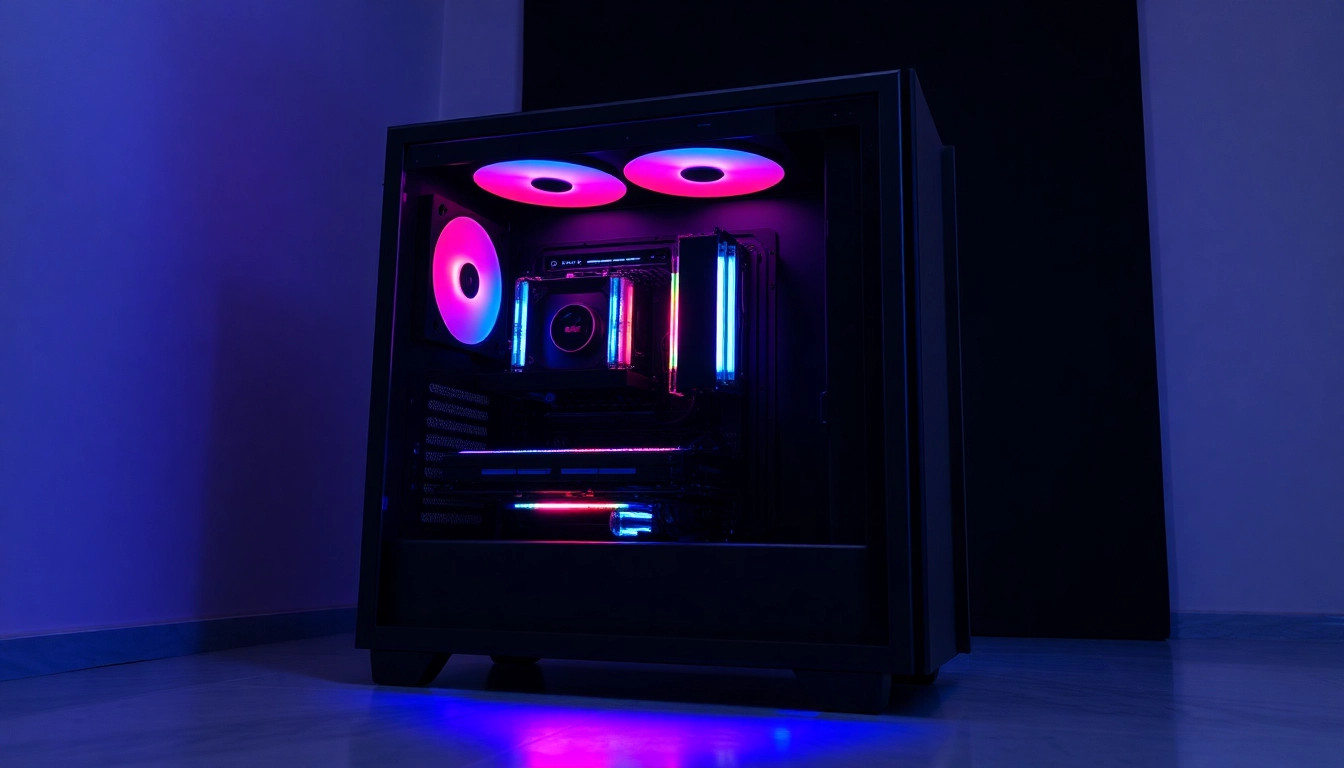Understanding Thermal Management Materials
What Are Thermal Management Materials?
Thermal management materials are engineered products designed to manage heat in various environments, primarily in electronic devices. These materials play a critical role in dissipating heat, thereby enhancing the performance, reliability, and lifespan of electronic components. By efficiently transferring heat away from sensitive areas, thermal management materials prevent overheating and associated failures. In applications ranging from consumer electronics to industrial machinery, understanding and selecting the right thermal management materials can lead to significant improvements in functionality and safety.
The Importance of Thermal Management in Electronics
In the rapidly evolving landscape of electronics, devices are becoming increasingly compact and powerful, leading to higher heat generation. This rise in temperature poses risks, such as reduced performance and potential damage to components. Therefore, effective thermal management is crucial not just for performance optimization but also for regulatory compliance and longevity of the device. Moreover, as consumers become more aware of energy efficiency and sustainability, manufacturers are pushed to innovate thermal management solutions that minimize energy consumption while maximizing heat dissipation.
Common Types of Thermal Management Materials
Various thermal management materials cater to specific heat management needs. Here are some of the most prevalent types:
- Thermal Interface Materials (TIMs): These materials, including grease and pads, are placed between heat-generating components and heat sinks to enhance thermal conductivity.
- Phase Change Materials (PCMs): These substances absorb and release thermal energy during phase transitions, helping to stabilize temperature spikes.
- Thermal Gap Fillers: Typically softer and more conformable, these materials are designed to occupy gaps between surfaces, ensuring better contact and conductivity.
- Thermal Adhesives: These are bonding agents that also provide thermal conductivity, useful in mounting applications where traditional mounting hardware is impractical.
- Heat Spreaders: Often made from metals such as copper or aluminum, these materials spread the heat over a larger area to improve dissipation efficiency.
Key Properties of Effective Thermal Management Materials
Thermal Conductivity and Its Impact
Thermal conductivity is the key factor in determining how well a material can transfer heat. It is essential to choose materials with high thermal conductivity to ensure effective heat dissipation. The unit of measurement for thermal conductivity is watts per meter-kelvin (W/mK). For instance, materials like copper and aluminum have high thermal conductivity values, making them popular choices in electronic applications. Conversely, materials with low thermal conductivity can contribute to heat buildup, leading to malfunction or reduced lifespan of electronic devices.
Durability and Lifecycle Considerations
Durability is another critical property of thermal management materials. Materials must withstand environmental extremes, mechanical stresses, and chemical exposures. For applications in automotive or industrial settings, selecting materials that resist degradation over time is essential to maintain performance. Lifecycle considerations encompass not only physical durability but also factors like thermal cycling and thermal fatigue, which can affect a material’s performance over prolonged use. Manufacturers are increasingly designing thermal materials that not only perform well initially but also maintain their efficiency throughout their expected lifecycle.
Selecting the Right Material for Your Application
Choosing the appropriate thermal management material involves understanding the specific needs of your application. Factors to consider include:
- Operating temperatures: Determine the temperature range your components will encounter.
- Thermal performance: Evaluate the required thermal conductivity and the type of heat transfer needed (conductive, convective, or radiative).
- Mechanical properties: Consider mechanical stress and how the material will behave (e.g., flexibility, softness).
- Environmental exposure: Identify potential environmental factors such as moisture, vibrations, or chemicals that might affect the material’s performance.
- Regulatory requirements: Ensure that the chosen materials meet industry standards or compliance regulations relevant to your product.
Applications of Thermal Management Materials
Use Cases in Consumer Electronics
In consumer electronics, thermal management materials play a pivotal role in devices such as smartphones, laptops, and gaming consoles. These devices generate significant heat due to their compact design and high processing power. For example, thermal pads are often deployed in smartphones to bridge gaps between processors and heat sinks, enabling efficient heat distribution and preventing thermal throttling, which can degrade performance. Similarly, gaming consoles extensively utilize thermal interface materials to maintain performance during intensive gaming sessions, where heat generation is constant.
Industries Benefiting from Thermal Solutions
Beyond consumer electronics, thermal management materials find utility across several industries:
- Automotive: The automotive industry employs thermal materials for managing heat in electric vehicles (EVs) and internal combustion engines.
- Aerospace: Thermal management is critical for aerospace applications to ensure safety and reliability at various altitudes and temperatures.
- Industrial Equipment: Many industrial machines use thermal management materials to safeguard electronic controls and sensors from overheating.
- Renewable Energy: In solar power systems, thermal materials help manage the heat produced by photovoltaic panels, ensuring efficient energy conversion.
Innovative Uses in Emerging Technologies
As technology evolves, so do the applications for thermal management materials. Emerging technologies such as 5G communications, artificial intelligence, and IoT devices require innovative thermal solutions to accommodate their unique thermal challenges. For instance, 5G equipment generates substantial heat due to high performance and dense integration. Hence, manufacturers are increasingly relying on advanced thermal interface materials and high-performance gap fillers to maintain device functionality and reliability in compact environments.
Best Practices for Implementing Thermal Management Solutions
Design Considerations for Electronic Assemblies
The design phase is critical when integrating thermal management solutions. Designers must consider the layout of electronic components, ensuring optimal airflow and heat dissipation paths. Using simulation tools during the design phase can help predict thermal hotspots within devices. Additionally, it’s essential to leave space for thermal materials and ensure adequate mounting surfaces for TIMs and other materials.
Installation Techniques for Optimal Performance
Proper installation of thermal management materials is vital for ensuring their effectiveness. Here are some best practices:
- Surface Preparation: Clean surfaces thoroughly and ensure they are free from contaminants that may affect adhesion and thermal contact.
- Apply Even Pressure: Ensure that TIMs are applied evenly with adequate pressure, as this can significantly enhance thermal conductivity.
- Avoid Air Gaps: Minimize air gaps during installation, as they can act as insulators and impede heat transfer.
- Temperature Control: Consider the thermal expansion properties of materials being used and avoid excessive force that might lead to material damage.
Monitoring and Maintenance of Thermal Management Systems
Monitoring the thermal performance of systems is essential for long-term reliability. Regular maintenance checks can help identify potential issues before they lead to failures. This includes checking for any signs of thermal compound degradation, mechanical wear on contact surfaces, or the presence of dust and debris that may obstruct cooling paths. Implementing temperature sensors can provide real-time data and help optimize cooling solutions, adjusting them based on actual needs rather than assumptions.
Future Trends in Thermal Management Materials
Advancements in Material Technology
The future of thermal management materials is linked to advancements in material science. Researchers are developing new materials that offer enhanced thermal performance while being lightweight and versatile. Examples include advanced composites and nanomaterials that provide higher efficiencies. Innovations such as thermally conductive polymers are also expected to gain traction, fostering unique designs and applications.
Sustainability in Thermal Management Solutions
With sustainability becoming increasingly important, the development of eco-friendly thermal management materials is on the rise. Researchers are focusing on sourcing materials from recyclables or creating bio-based alternatives to traditional thermal materials. These sustainable solutions not only minimize environmental impact but may also offer performance benefits that can cater to emerging industry demands.
Impact of Regulations on Material Selection
As industries evolve, regulations governing thermal materials continue to grow stricter, particularly about safety standards and environmental concerns. Compliance with these regulations is crucial for manufacturers to avoid legal implications and ensure their products are market-ready. Companies must keep abreast of changes in regulations and work with material suppliers that adhere to industry standards, particularly in highly regulated sectors such as automotive and aerospace.













Leave a Reply